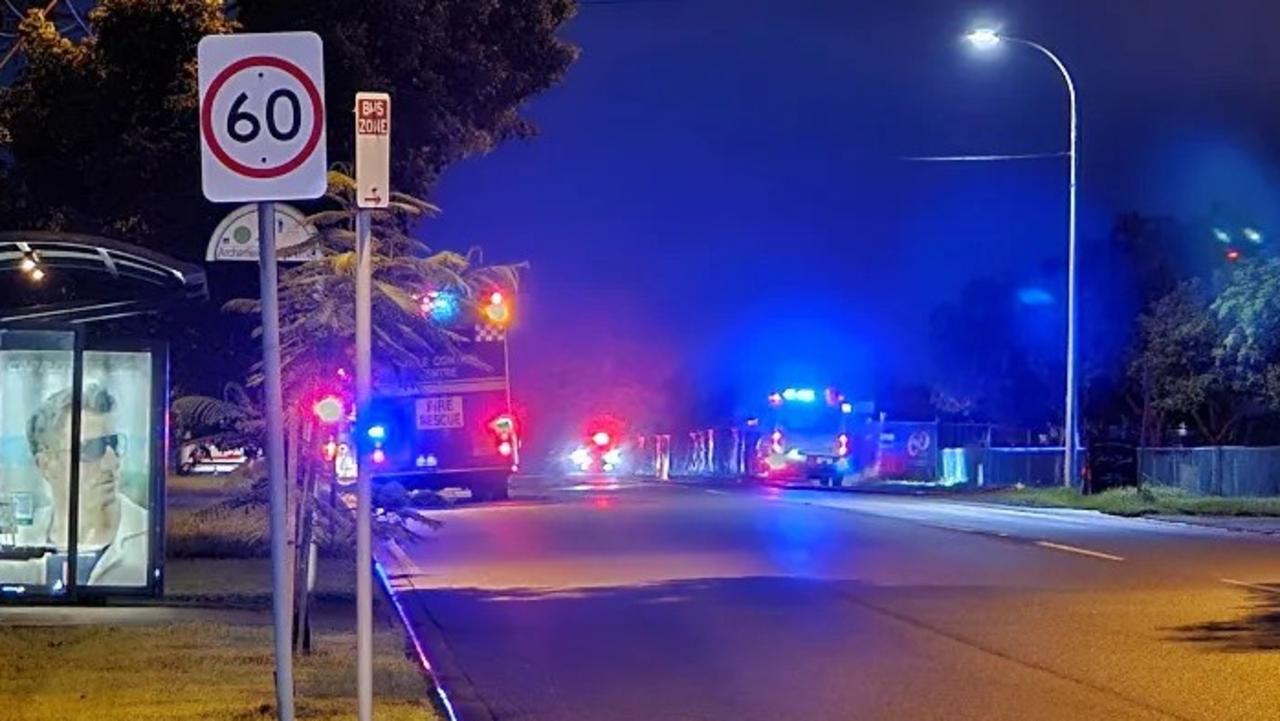The Sunday Mail turns 100: Century of Qld history
For 100 years, The Sunday Mail has been a champion for the people of Queensland and the future of this great state. Read about our amazing history and download the first front page here!
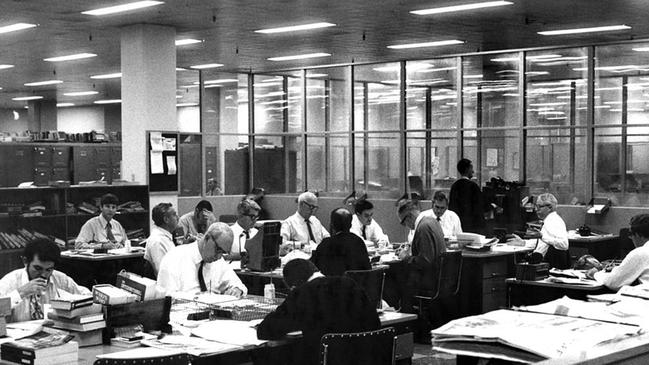
QLD News
Don't miss out on the headlines from QLD News. Followed categories will be added to My News.
For 100 years, The Sunday Mail has been a champion for the people of Queensland and the future of this great state.
We mark a century of this paper fighting for justice, shining a light in dark corners, and standing shoulder to shoulder with you, our readers.
Through the high times and the low, through flood, drought and pandemic, through grand final wins and everyday victories, The Sunday Mail stands with Queenslanders.
I hope you enjoy this special series to celebrate The Sunday Mail.
We’ve loved being right there with you every weekend.
Anna Caldwell
Editor, The Sunday Mail
PART 1: Our story is 100 years of Queensland history
From the ordinary to the extraordinary, we’ve been here to share it with Queensland
It all began one century ago this weekend, and while the world has changed dramatically since the first edition rolled off the presses, a glance at the first edition of The Sunday Mail reveals some topics never go out of fashion.
The premier complains that Queensland is getting a raw deal from Canberra, drunk drivers are a serious problem on our roads, and women are advised to be wary of predatory men.
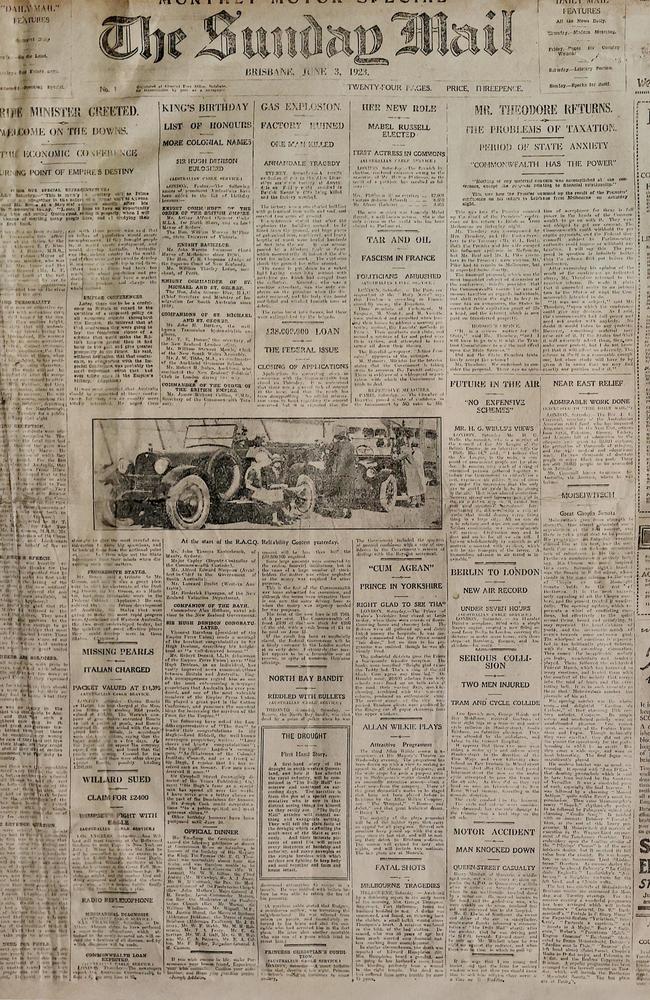
It all sounds so familiar, yet it was the news of the day a century ago on June 3, 1923, when the first edition of The Sunday Mail was offered to the public at the price of three pence or a “threepenny bit” – a coin which might have then bought you half a loaf of bread.
Since the heady 1920s, when the paper came to life riding a wave of prosperity sweeping the Western world, The Sunday Mail has taken Queenslanders through the Great Depression, World War II, the assassination of John F. Kennedy, the conflict in Vietnam and the 1969 moon landing.
A journey through ageing copies reveals a paper both reflecting and championing the extraordinary growth of a state over the past century. We were by Brisbane’s side for the building of the iconic Story Bridge and the hosting of Expo ’88.
Back in 1923, Queensland families camped out for weekend holidays in the sand hills not far from what is now the Gold Coast’s Cavill Ave, Cairns was still a shanty town, Airlie Beach didn’t even have a name and Lindeman Island was soon to become the first Whitsunday resort to host an overnight guest.
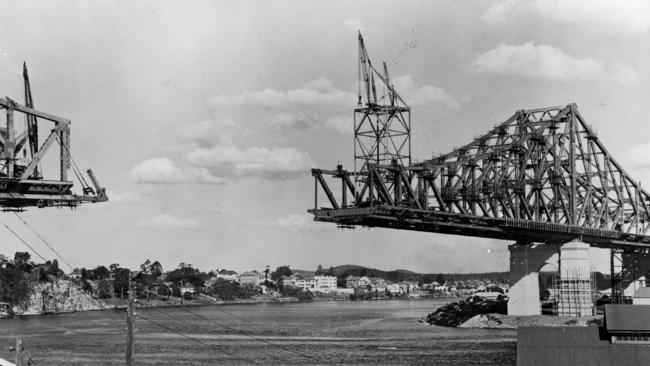
The impact of the Korean War of the 1950s becomes clear in the social pages as extraordinary wealth spreads across the western regions of the state, courtesy of America’s decision to buy large volumes of wool from Queensland graziers to increase its strategic wool stockpiles.
Reports and photos of social events and society weddings in places such as Charleville and Longreach were not uncommon in the 1950s, while developments in agriculture were closely covered. The influence of the Gold Coast becomes apparent as the 1960s loom into view, with the now heritage-listed Kinkabool apartment building appearing on the Surfers Paradise skyline and wowing the state as it soared 10 stories into the heavens.
Sermons from the church pulpit were still considered news, and issues affecting women were popular, including guidance on matters of morality and warnings about predatory men.
One column in the first edition suggests, in diplomatic language, that young women should be wary of becoming too “intoxicated’’ while dancing, warning “bright lights, bewitching music and late hours’’ could all combine to “whet the appetite of dancers and make them wish for further novelty”.
Housing did not appear to be a problem in 1923, with a three-bedroom house in Milton on offer for 750 pounds. If money was a problem, a finance plan with a deposit of about 120 pounds could be arranged.
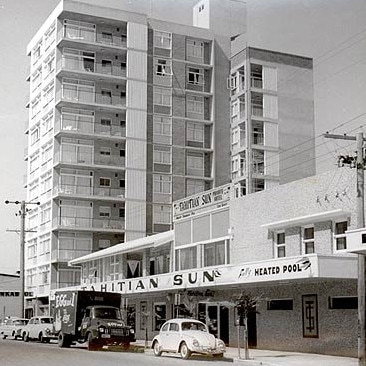
The first front page also had a good slice of international news, with a report that a landmark air flight from Berlin to London had taken less than seven hours while, in a separate article, the novelist H.G. Wells boldly predicted air travel could become the “transport of the future”.
One of The Sunday Mail’s more legendary editors – who managed to retain the respect and affection of many of his reporters while simultaneously haranguing and browbeating them throughout the 1990s – was Bob Gordon.
It was Gordon (while chief-of-staff at The Courier-Mail) who originally tapped reporter Phil Dickie on the shoulder and dispatched him to check out illegal gambling and brothels in Fortitude Valley, sparking perhaps the biggest Queensland story of the 20th century, which culminated in the corruption-busting Fitzgerald Inquiry.
Gordon still has what might be termed a “deep throat’’ from those years – a man-about-town who provided valuable information about serious criminality but whose name he has always refused to reveal.
As Sunday Mail chief-of-staff and then editor from the mid ’80s into the ’90s, Gordon used the front page to maintain the fight against corruption while putting the paper’s muscle behind big events and laying the foundations for what became the Brisbane Festival’s Riverfire showpiece.
Fighting corruption, then entrenched in the police force, was not without its hazards in the pre-Fitzgerald years, with the police putting a tail on Gordon every night he drove home from the office.
Gordon recalls offering to drop another former Sunday Mail editor Des Houghton, who lived close by, to Houghton’s home each night, reasoning that if the police were going to do him a mischief, it would be more difficult to get rid of two bodies than one.

Gordon also remembers putting a picture of Kristy Hinze, granddaughter of Queensland politician Russ Hinze, in the paper, sparking an international modelling career, and chatting with acting premier Bill Gunn about the appointment of Tony Fitzgerald, QC, who unearthed the full extent of political and police corruption.
And he remembers the talents of journalists such as Peter Morley, who headed the political round at the Courier for decades and later worked on The Sunday Mail and was, in Gordon’s opinion, one of the best political reporters in the country. Another was Sylvia da Costa-Roque, who for 40 years eclipsed the traditional role of handling the “women’s pages”, breaking stories as well as becoming one of Australia’s most successful newspaper columnists.
“I loved every day of it,’’ Gordon says. “We all believed in journalism and we all ¬believed in the important role a newspaper has in society.’’
That role continues to this day. The Sunday Mail in recent months has been at the forefront of the scandals inside our state’s health system, including the closing of regional ¬maternity wards and the appointment of dodgy doctors.
It has also been a prime mover in uncovering the extent of juvenile crime, active in campaigns to address domestic violence and also committed to both making the 2032 Olympic Games a success and leveraging an economic boom out of the event for all Queenslanders.
Editor Anna Caldwell says The Sunday Mail has never wavered from its mission to shine a light in dark corners, inform, entertain and, most importantly, provide a voice for ordinary Queenslanders.
“We are all proud to be here after one century of journalism, still providing a voice for Queenslanders, still speaking truth to power,” she said.
Catching up with an old friend
Frances Whiting
I’m waiting in a very small line – just one bloke in a hi-vis vest ahead of me – and when it’s my turn to order, the woman behind the counter says: “What would you like, Frances?”
I’m a little surprised, because I’m a long way from home – about 1000 clicks from Brisbane – in a very small town, Thargomindah, or as most people who know this little gem in Bulloo Shire, Thargo. It’s tucked in the southwest corner of Queensland (population 270 at the last census) and I don’t know anybody here. But it seems they know me.
“Loved your column this week, Fran,” she says, giving me my toastie. Then she turns to the bloke in the hi-vis. “You know who this is?” she asks. He doesn’t. “It’s Frances Whiting, from The Sunday Mail.” “Oh,” he says, “My mother reads you every week.”
Every week. There’s a lot of comfort contained in those two words, isn’t there? Something familiar. Reliable. Comforting. And to produce something every week for 100 years is quite the innings, isn’t it? Not, I hasten to add, that I’ve been writing my column for 100 years, it just feels that way sometimes.
No, I’m talking about this paper you hold in your hands – or read online – today. Like I do. Like my late father did. I can see him very clearly, sitting at our kitchen table on a Sunday morning in Indooroopilly where I grew up, the paper spread out before him, glasses perched on the end of the nose, smoking (it was the ’70s, everyone smoked) and shaking his head at something a politician did.
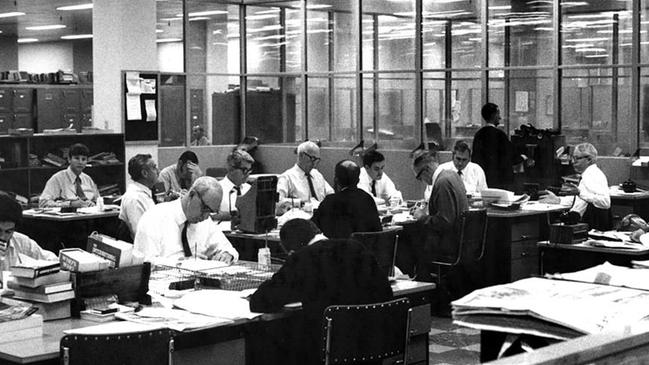
I can see my mother chuckling at something Susan Hocking, a long-term columnist for The Sunday Mail, said. I met Susan Hocking once. She bobbed up in front of me at a party and said cheerily: “Hello! I used to be you.”
I was in The Sunday Mail once too, long before I started to write for it, and in the days when being in its social pages was the height of sophistication. I was not sophisticated at all, but let me tell you, when I appeared in The Sunday Mail in those pages, posing on the steps of the Regatta Hotel with my friend Ali, I thought I had made it. So did Ali. She rang me that morning. “We’re in!” she told me, “We’re in!” It was around Christmas, and they called me “That L’il elf Frances” in the caption. I don’t know why – it was the ’80s, not a lot made sense then, including our clothing.
And I, like just about every other Queenslander, couldn’t wait to open The Sunday Mail to get to the TV Scene and work out what I’d be watching that week. What we’d all be watching that week. On the four stations. Explain that to the kids now.
And when I walked into The Sunday Mail newsroom years later as a young journalist, I remember flicking my eyes around the desks and seeing people who I’d been reading for years.
Some have fallen now. John Hay, the gentleman scribe, Cecilia “Bubbles” McNamara, the social queen, and Ritchie Yorke, beloved music writer, committed hippie and friend to John Lennon. There was Peter Hanson, legendary crime reporter, who always walked around the newsroom with his notebook tucked into the back of his very low trousers.
Someone once said to me: “Can you even say you’ve worked at The Sunday Mail if you haven’t seen Hanson’s glorious crack?” No, I replied, I don’t think you can.
Here’s the thing about newspapers and journalists – there’s a great camaraderie. Every now and again, you get a bad ’un, but for the most part, newspapers are great places to work.
The Sunday Mail was that for me, and for a very long time before I moved into feature writing for Qweekend. It was where I learnt my craft, met some of my closest friends and where a column I wrote in August, 1997, changed my life.
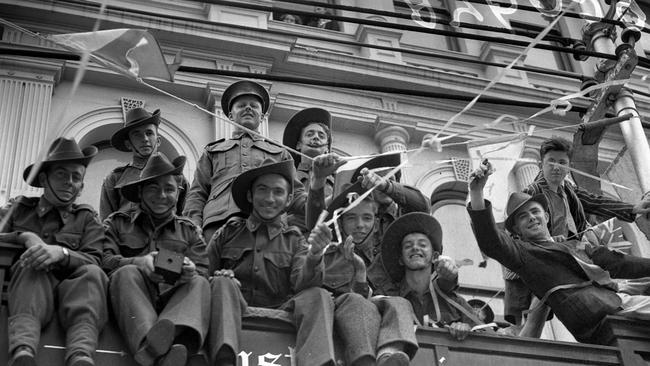
It’s been going a long time too – granted, not 100 years, but long enough for me to meet thousands of readers, from the woman at the Thargo roadhouse to the cabbie who I’m sure confused Sir Richard Branson no end when, as we were both travelling in the taxi together (I was doing a profile on him), wanted my autograph, not his. Because he knew me. Knew the column. Knew The Sunday Mail.
That’s what happens when you’ve known someone, or something, for a long time. You become familiar with them. Comfortable. At home. With you. On a Sunday. That’s pretty special. Thanks for reading us all these years.
PART 2: Pictures from big moments
With his calm demeanour and faultless eye for an impeccable image, former Sunday Mail photography editor Mark Cranitch has watched Queensland history unfold from behind the lens of his Canon Camera.


Cranitch played a key role in the life of The Sunday Mail as one of its top photographers and was elevated to Deputy Picture Editor in 2007, remaining in the job for three years.
He remembers key points in Queensland history such as the elevation of Anna Bligh to the office of Premier in 2007 and numerous subsequent trips across the state photographing the first female leader of the state.
The annual scramble to cover the Brisbane Exhibition, literally from every angle, was also part of his brief as were iconic events such as the Birdsville races and “Beef Week’’ which got him out into the regions, which he particularly enjoyed.
But it was in times of natural disasters that Cranitch says the paper had a real opportunity to do its duty to the Queensland public, and where photography was crucial in bringing home the often confronting reality of human tragedy.

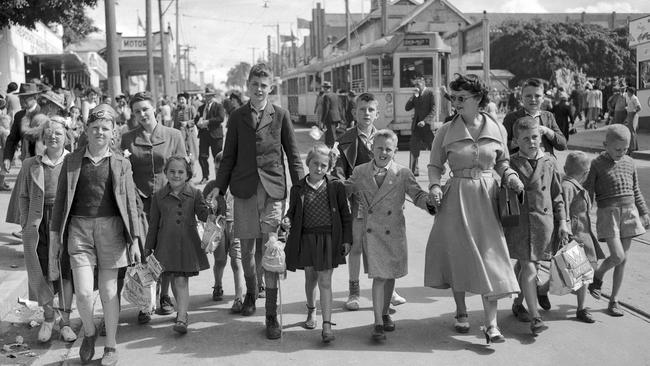
“I actually got stuck out at Laidley (in the Lockyer Valley) for about one week during the 2010-11 floods with journalist Andrew MacDonald,” he recalls.
“We were out there covering the heavy rains and it became so flooded we couldn’t get out.
“But we could still send stories and pictures, so we just got on with it and did our jobs.”
Cranitch, now 53 and a photography graduate from the Queensland College of Art, is old enough to remember the move from analog to the digital age.

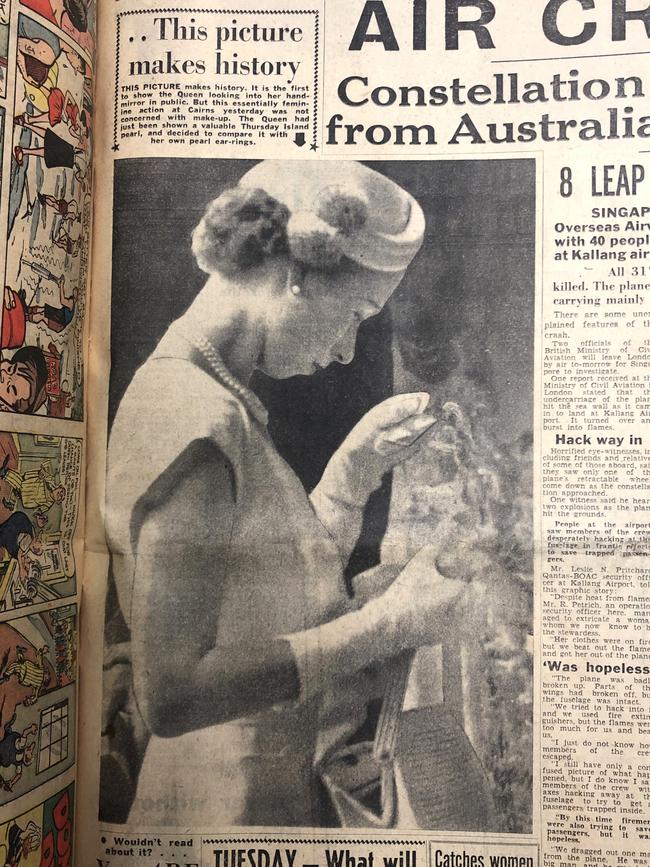
Photographers out on the road would often transform their hotel room into a makeshift darkroom to process film, right up until the 1990s.
“I remember I had what was called a ‘dark bag’ where I had to process film,” Cranitch says. “You had to put your hands in the bag and do everything blind.
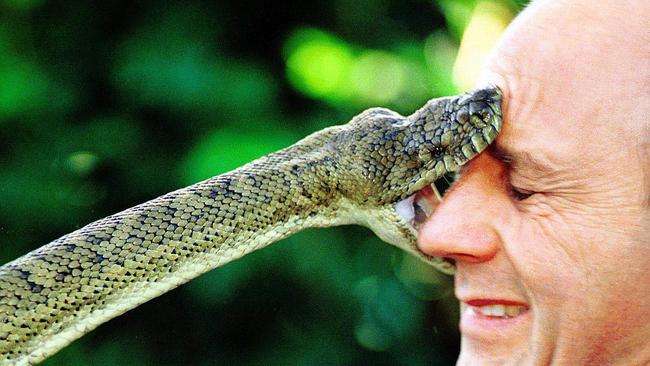
“The process involved mixing chemicals in a jug, pouring the mixture into a developing tank, getting the temperature right and sloshing it around for five minutes until your negatives appeared.”
The entire process, almost always at the end of the long day, was often accompanied by the sound of a journalist banging on the hotel room door, demanding the photographer finish up and go for a beer and a steak.


Still shooting for a range of commercial and corporate clients, Cranitch says one of his great pleasures in newspaper photography was going for a shot for the newspaper’s magazine cover.
“There is no question I enjoyed my time with The Sunday Mail,” he says.
“I loved the world of photography, and I still do.’’

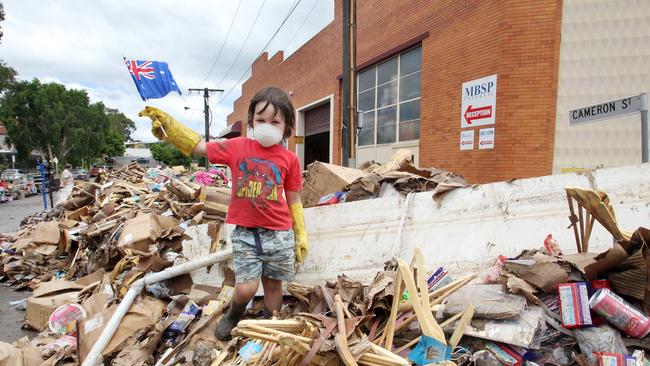
PART 3: A strong voice for progress
For 100 years The Sunday Mail has been an advocate for Queensland, using its influence to help shape the contours of our economic and political landscape while reflecting the evolving cultural and moral views of its readers.
From supporting land grants to soldiers returning from our wars to the mining boom of the 1970s and the transformative role of Expo 88, the newspaper has been both a reporter of news, an arbiter of opinion and an enthusiastic exponent of proposals which editors believed would benefit the state.
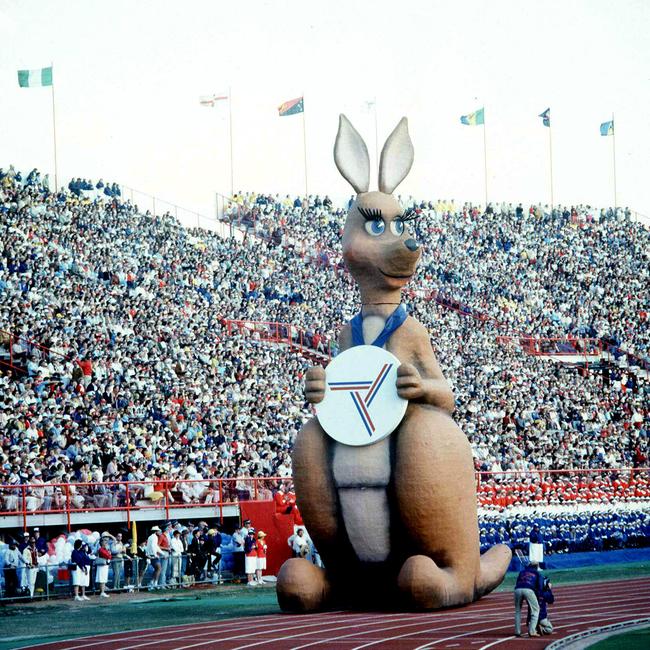
Even the fleet of CityCats – now such visual shorthand for the state capital that they regularly feature in cityscape paintings – were once an out-of-left-field proposal which needed an editorial push to get over the line.
Former Labor Brisbane lord mayor Jim Soorley remembers those contentious few years back in the 1990s very well, as he used his time while running city hall to reposition the river as the heart of the city.
“Those CityCats would never have been there today if I hadn’t been so pig-headed,” Soorley says bluntly as he recalls the bitter opposition he received from his Liberal opponent in city hall in the ’90s.
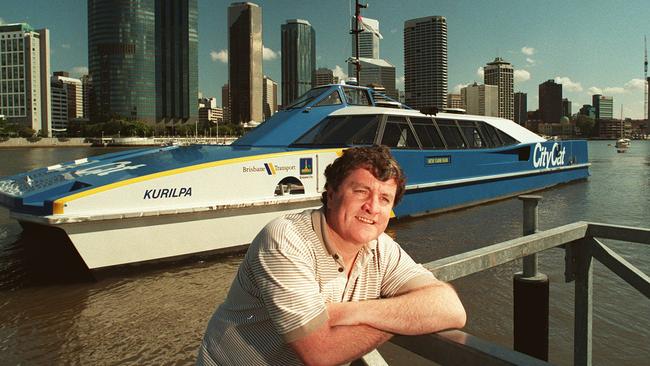
Soorley had sampled the Parramatta ferries during a trip to Sydney and saw their potential value for Brisbane but was opposed by those who feared the catamarans’ wakes would wash away the banks of the Brisbane River.
But he could still sell the idea to Sunday Mail editors such as Bob Gordon who, like Soorley, had a creative imagination and a seemingly endless reservoir of optimism.
“In a way, Bob was for everything – you couldn’t do anything with Bob but love him,” Soorley says.
Former National Party premier Rob Borbidge, who ran the state from 1996 to 1998, remembers the influence of a newspaper which shaped public debate and could set the tone of an entire parliamentary week.
His staff fought tooth and nail to get coverage in the Sunday paper, believing it was a hotline to the Queensland public that could spark change.
“The Sunday Mail always played with a pretty straight bat – they would give us a touch-up if needed and a bit of praise if we deserved it,” Borbidge remembers.
“But the thing I remember most was trying to get that Sunday Mail front page at the start of a parliamentary sitting week.
“If you got that message out there, you could pretty much set the tone for the week.”
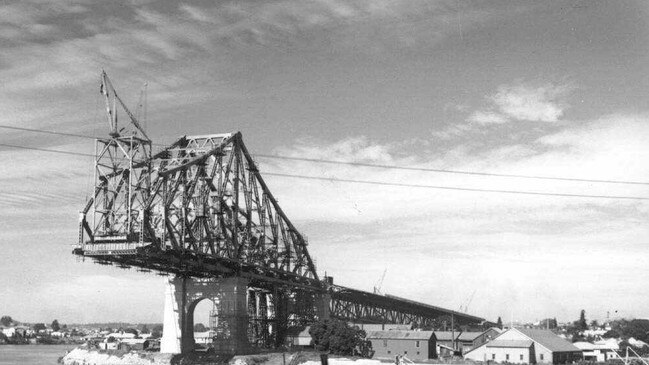
Peter Beattie, who was premier from 1996 to 2007, remembers The Sunday Mail as one of the most powerful media organs in the state, with the highest circulation and a deep, statewide reach.
“That scared politicians and political parties of all persuasions,” Beattie says.
Beattie also recalls a paper which was historically conservative, but willing to move with the times, reflecting the changing views of its readership.
He credits management of the newspaper in the 1990s with the courage to take on the establishment – as it did when exposing the entrenched National Party corruption which led to the landmark Fitzgerald Inquiry.

“The paper progressed as society progressed, and that is what a newspaper should do,’’ Beattie said, adding that he was “delighted’’ when another female editor (Anna Cald-well) was appointed earlier this year.
Liz Deegan became the newspaper’s first female editor in 2006.
Student street protests of the late 1960s and early 1970s were a cause of global panic, especially in 1968 when international centres from Paris to Chicago exploded in violent unrest.
The Sunday Mail’s pages clearly reflected an editorial position supporting law and order and even condemnatory of protest which included violence.
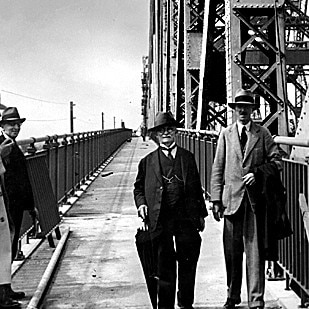
Yet, even in the midst of upheaval, The Sunday Mail columnist David Bray, writing in the tumultuous year of 1968, was airing the then progressive view that Queensland’s students’ “disagreement with government policy should never shock nor surprise authorities” and that no student recipient of a Commonwealth scholarship should have it revoked because they had engaged in protest.
“At least they didn’t take mine,” says Beattie, a University of Queensland scholarship recipient who was active in the Brisbane protest movement of the early 1970s, including protests against the touring all-white South African Springboks rugby union team which both dominated news coverage and left the future premier with a few bruises from overly zealous Queensland police officers.
Thirty years before Beattie made pivotal decisions in office which led to the billion-dollar expansion of the LPG gas industry in Queensland, one of the most transformative pieces of legislation to pass the Queensland parliament was the 1968 Central Queensland Coal Associates Agreement Act which brought to life the mining hinterland, leading to the creation of towns such as Moranbah, Dysart and Middlemount and building an economic pillar for the state.

The Sunday Mail was an enthusiastic supporter of the mining industry, and remained largely pro-development and pro-mining for the next half century.
That editorial support put Queensland in a position of economic strength still reflected in last Tuesday’s budget where State Treasurer Cameron Dick readily conceded coal mining royalties were the chief reason the present state government could afford its “big build’’ expenditure program.
And The Sunday Mail’s advocacy and campaigning continues.
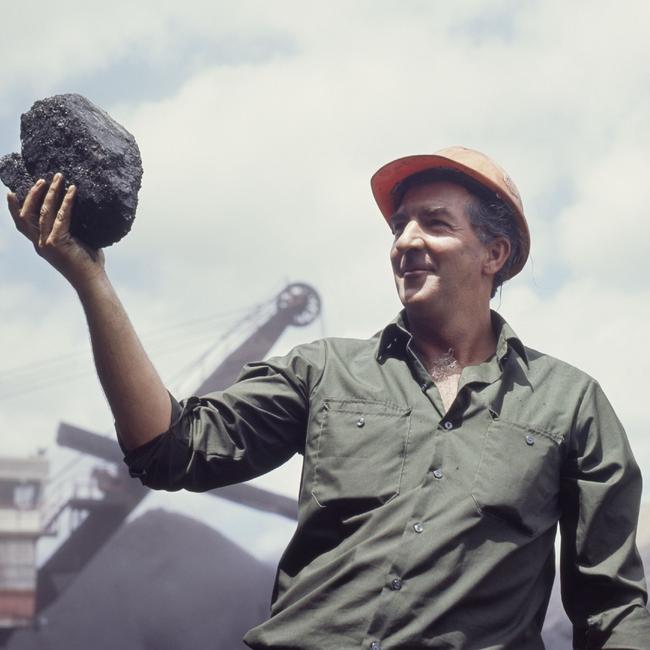
Whether it be in the area of fighting juvenile crime or identifying problems in our regional maternity wards, where journalists such as Jackie Sinnerton produce front-page news stories accompanied by editorials insisting the powerful be held to account, the interests of ordinary Queenslanders will remain at the core of The Sunday Mail’s identity.
Caldwell says the paper understands and appreciates its historical legacy and will go on playing a crucial role in providing a sounding board for public discussion while identifying and championing worthy ideas to improve not only our own prosperity.
PART 4: Reaching all of Queensland
It was the longest paper run in the southern hemisphere, requiring a pony express relay of truck drivers from Brisbane to Longreach to get the paper to that far-flung western Queensland town before Sunday lunch.
And Harold Daly, the 80-year-old Sunshine Coast-based truckie who still occasionally gets behind the wheel of one of his 40 vehicles, was the man to make it all happen.
The first regional editions of the paper were loaded on to trucks about 8pm on Saturday.
Then they would head south, changing drivers constantly throughout the night until they got the load to Rocky, where they then swung westward.
The last driver change would be at Emerald just as the sun rose, allowing the truck to roar into Longreach about 10am.
“I’ve loved every minute of it,’’ Harold says of his transport career, which began six decades ago when he started delivering milk in Gympie.
“We always got the papers through.’’
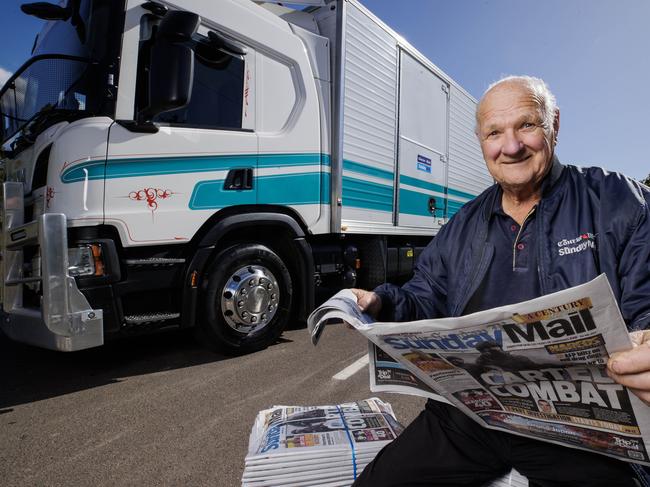
A half-century after Harold got involved with his “paper round’’ in the 1970s, The Sunday Mail is shot around the world even before the sun rises, with millions of people able to read the news of Queensland by simply turning on their phones or computers.
A half-century before that, when the first edition rolled off the presses in 1923, the paper was likely to delivered by a horse-drawn cart making its way through Brisbane suburbs of a Sunday morning,
Meanwhile, in its 100 years of existence, the paper has provided employment for thousands of paper boys and girls who earned their first wages by throwing it over the front fence.
In the decades following July 1920, when Captain Roy King jumped into his Sopwith Gnu and delivered copies of the Brisbane Courier to Toowoomba in what was Queensland’s first recorded aerial paper delivery (it took him an hour), the paper has been loaded on to the planes on many occasions, especially when floods have cut roads. Yet the paper delivery business, even in such a decentralised state of Queensland, has been largely confined to terra firma.
And it was Harold who played a pivotal role in developing the paper round into a statewide enterprise, becoming an integral part of the history of The Sunday Mail and its sister paper The Courier-Mail over the past 50 years.
He learned a bit about transport logistics in his younger milk delivering years in Gympie, but broadened his horizons in the 1970s when he got into newspapers.

In the mid-’70s, he and his crew would wait at a Gympie southside servo in the early hours of the morning to greet the truck from Brisbane, then drive their trucks loaded with papers to Bundaberg and Maryborough.
Proving to be reliable and innovative, especially when obstacles threatened delay, Harold’s responsibilities, like his profits, grew.
By the second decade of this century, Harold, his drivers and his ever-expanding fleet were moving papers right across the state, from Goondiwindi on the border all the way up to Cairns in the far north.
When the flooding in 2001 caused problems on the Bruce Highway, he rerouted through the inland highway system, renting a motel at Biggenden west of Maryborough as a temporary transit centre where drivers could be switched.
In the Summer of Disaster of 2010-11, the town of Emerald was entirely cut off by road for weeks, yet Harold noted the trains getting through over the Vince Lester bridge.
So his crew backed up trucks to a railway carriage, loaded them up – and the people of Emerald got their paper.
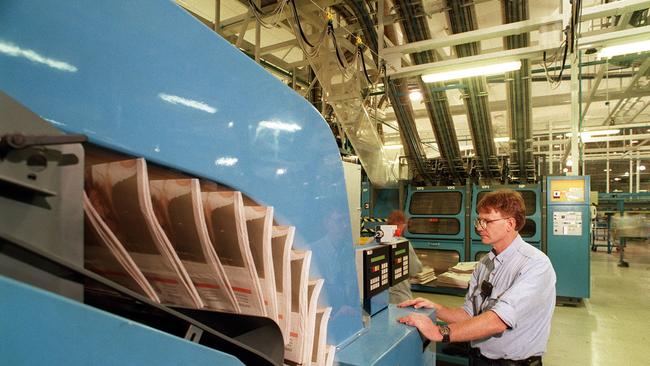
Growing with The Sunday Mail, his company, Daly Transport Pty Ltd, is now a significant Queensland transport company. His fleet of vehicles clocks up more than 80,000km a week.
When he got into the business, it was the V8 Dodge trucks made by Chrysler that got the paper through.
Today, Harold swears by the Scania, pointing to one truck with well beyond one million kilometres on the clock, which still hasn’t required any major mechanical overhaul.
“We just service them regularly and change the tyres,” he says. “And they just keep going.’’
The Sunday Mail also “just keeps going’’. It will continue reaching readers in the decades ahead in ways that have not yet even been imagined.
In the past two decades, the flexibility of the digital age has allowed stories to be updated literally by the minute rather than leaving readers waiting 24 hours for the next instalment.
The reach of the paper is also as vast as satellite technology will allow, and while editorial policy will always put Queenslanders first as the key readership, The Sunday Mail is now instantly available to the hundreds of millions of people across the world.
It has been a long journey for a paper that always looks optimistically to the future, much like Harold.
At 80, he sees no reason to put himself on the bench, often getting behind the wheel himself when an extra driver is required.
“I reckon I’ve got another decade in me,’’ he says.
“I like to work.’’


